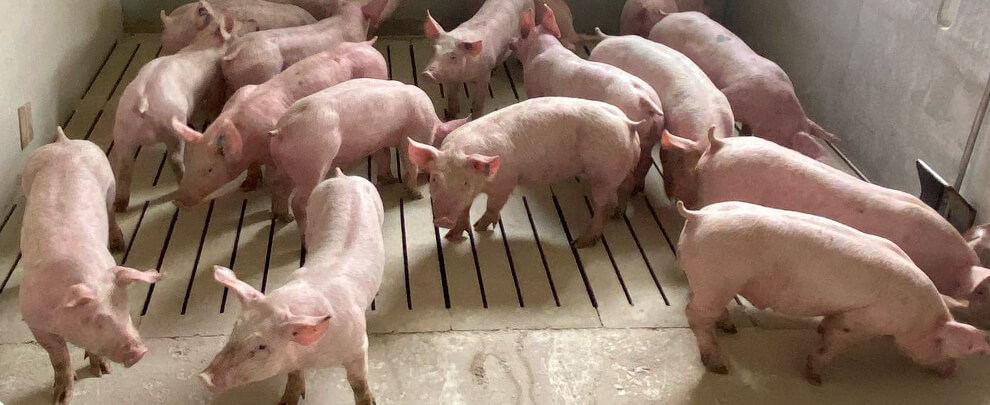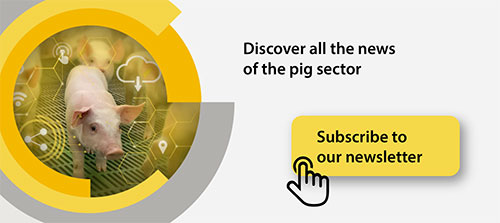Blog
Blog

Benefits of climate control for finishing pigs
15th July 2025 - News
Marcel Weiss Hoffmann. Munters Sales Area.
On the pig production, each step of development is critical for a profitable result. The growing and finishing phase in swine production is often overshadowed by other stages, such as farrowing and gestation, where the mortality rates and economic stakes are perceived as higher. However, this critical phase is when pigs consume the most feed, making it a significant driver of production costs. Proper climate control during this period has proven to be a game-changer, offering substantial benefits in terms of feed conversion rates, animal welfare, and behavior..
Enhanced feed efficiency and lower production costs
One of the primary advantages of climate-controlled facilities is the improvement in feed conversion rates. Research has shown that pigs in such environments use feed energy more efficiently for growth rather than for maintaining their body temperature in response to heat or cold stress. For example, during extreme temperatures, pigs either eat less due to heat stress or expend more energy from feed to regulate body temperature in cold conditions. In climate-controlled facilities, pigs can fully utilize feed for weight gain, improving efficiency significantly. Studies have demonstrated that this optimization can result in higher weight gains and reduced FCR. This increments in productivity allow best utilization of resources, as feed and time, reducing the overall cost of production.
Animal welfare and behavior
Climate control directly impacts animal welfare, creating an environment where pigs experience minimal stress. Temperature extremes, whether the scorching summer heat or harsh winter cold, can lead to discomfort, reduced feed intake, and susceptibility to disease. In controlled conditions, pigs are less prone to thermal stress, maintaining better health and showing improved productivity.
Moreover, climate-controlled barns promote better animal behavior. Pigs experiencing heat stress often exhibit aggressive behaviors, including fighting. These behaviors can lead to injuries, reduced weight gain, and compromised welfare. In contrast, a stable and comfortable environment minimizes aggression, fostering a calmer and more productive herd. The reduction in stress-related behaviors contributes to overall animal well-being and enhances the sustainability of the operation.

Fattening barn. Photo: Ferber.
Economic and environmental benefits
Investing in climate control systems also generates significant economic returns. Pigs in controlled environments gain more weight, faster and consistently, compared to those in naturally ventilated facilities. For instance, in studies comparing the two systems, pigs in climate-controlled barns gained up to 5 kilograms more during the growing phase. These gains translate into shorter time-to-market and higher profitability.
Additionally, climate-controlled barns reduce feed waste and optimize feed-to-weight conversion, which is critical given the high proportion of total production costs attributed to feed. Improved feed efficiency also lowers the environmental footprint by reducing emissions associated with feed production and digestion. Furthermore, such systems contribute to a significant reduction in greenhouse gas emissions from the facility, aligning with modern sustainability goals.
Tailored solutions for maximum impact
Modern climate control systems offer a range of technologies, including evaporative cooling panels, exhaust fans, heaters, and automated controllers. These systems allow precise adjustments to temperature, humidity, and ventilation, ensuring optimal conditions year-round. For instance, while non-climate-controlled barns rely on manual adjustments like curtain management, advanced systems automatically adapt to changing conditions, minimizing energy use and labor costs.
In growing and fattening facilities, where feed costs dominate production expenses, even a small improvement in feed conversion efficiency can have a substantial impact on profitability. Moreover, reduced mortality, fewer health interventions, and higher animal productivity contribute to a positive return on investment.
Conclusion
The growing and fattening phase is critical to the economic viability of swine production. While often overlooked, it is during this stage that climate control offers transformative benefits, enhancing feed conversion rates, reducing production costs, and improving animal welfare and behavior. In regions with climatic variations, such as the intense heat during summer or the freezing winters, climate control is not just a luxury but a necessity for efficient and sustainable production. By adopting these systems, swine producers can achieve healthier herds, higher profits, and a more environmentally sustainable operation.








